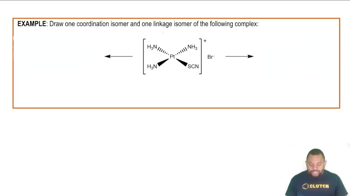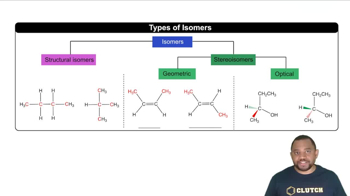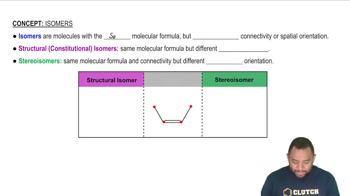Here are the essential concepts you must grasp in order to answer the question correctly.
Isomerism
Isomerism refers to the phenomenon where two or more compounds have the same molecular formula but different structural arrangements or spatial orientations of atoms. This leads to distinct physical and chemical properties among the isomers, making the study of isomerism crucial in organic chemistry.
Recommended video:
Isomerism in Coordination Complexes Example
Types of Isomers
Isomers can be classified into two main types: structural isomers and stereoisomers. Structural isomers differ in the connectivity of their atoms, while stereoisomers have the same connectivity but differ in the spatial arrangement of atoms. Understanding these types helps in predicting the behavior of different compounds.
Recommended video:
Importance of Isomers
Isomers play a significant role in various fields, including pharmaceuticals, where different isomers of a drug can have different biological activities. Recognizing the implications of isomerism is essential for the development of effective medications and understanding their mechanisms of action.
Recommended video:
 Verified step by step guidance
Verified step by step guidance


